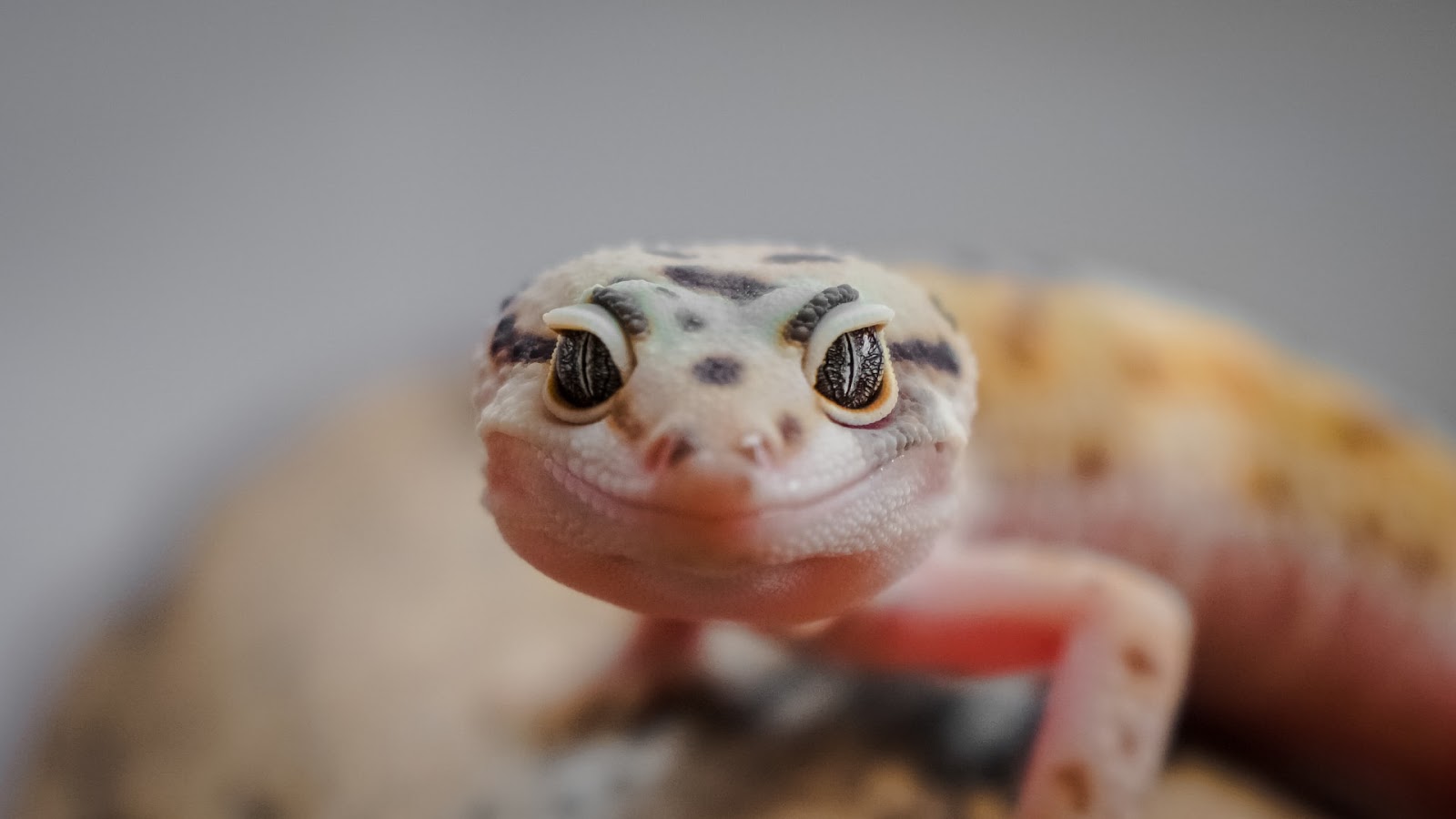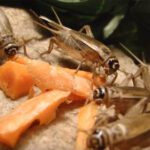Silkworms, also known as “silkies,” are the larval stage of the Mulberry silkmoth (Bombyx mori). These caterpillars are cultivated on both small and commercial scales, primarily for their silk production capabilities. However, silkworms also serve as a nutritious food source for leopard geckos and other reptiles.
Known for their high protein content and low-fat composition, silkworms make an ideal choice for leopard gecko diets, offering essential nutrients that support growth and health.
Beyond their nutritional value, silkworms are relatively easy to maintain and raise. Their natural lifecycle is seasonal, but they can be kept and cultured year-round with minimal care requirements. This adaptability makes silkworms popular in both private and commercial reptile food industries.
Silkworms are quiet, slow-moving, and generally odorless, requiring minimal space and maintenance. They can be found in some specialized pet shops and online, with many reptile owners purchasing live silkworms for immediate feeding.
Table of Contents
Nutritional Value of Silkworms for Leopard Geckos
The nutritional profile of silkworms makes them a valuable food option for leopard geckos. Silkworms are rich in protein, vitamins, calcium, and other essential minerals while being low in fat.

The following are some specific benefits of including silkworms in your leopard gecko’s diet:
- High Protein Content: Silkworms offer a substantial amount of protein, essential for growth, tissue repair, and overall health in reptiles.
- Calcium-Rich: With a favorable calcium-to-phosphorus ratio, silkworms support healthy bones and prevent metabolic bone disease, a common concern in leopard geckos.
- Low Fat: Silkworms provide a lean source of nutrition, ideal for maintaining healthy body weight and preventing obesity.
These qualities make silkworms particularly suitable for feeding gravid (pregnant) female leopard geckos and growing juveniles, as they provide essential nutrients in an easily digestible form.
Comparing Silkworms with Other Insect Foods
When compared to other commonly used feeder insects, such as mealworms (Tenebrio molitor) and crickets (Acheta domestica), silkworms hold several advantages. Both mealworms and crickets offer similar levels of protein, but silkworms have a higher calcium content and lower fat percentage.
This balance makes them more beneficial, especially for reptiles that require additional calcium to support bone health.
For instance, silkworms contain about 59% protein, closely matching the protein level found in mealworms. However, silkworms have less fat (around 17%) compared to mealworms, which can contain up to 30% fat. Additionally, the calcium-to-phosphorus ratio in silkworms is approximately 1:2, making it easier for leopard geckos to absorb the necessary calcium for bone strength. This ratio is significantly better than the 1:14 ratio found in mealworms and crickets, emphasizing silkworms’ superior nutritional profile.
Sizes of Silkworms Suitable for Leopard Geckos
Silkworms are available in various sizes, catering to different age groups and sizes of leopard geckos. Here are the typical stages of silkworm growth, referred to as “instars”:
- Hatchling / First Instar: 3 mm
- Second Instar (Small Silkworms): 9 – 19 mm
- Third Instar (Medium Silkworms): 19 – 31 mm
- Fourth Instar (Large Silkworms): 31 – 44 mm
- Fifth Instar (Extra-Large Silkworms): 50 – 75 mm
These varying sizes allow pet owners to choose the appropriate size based on the age and size of their gecko. Younger geckos will benefit from smaller, easier-to-swallow instars, while adult geckos can safely consume larger silkworms.
How to Feed Silkworms to Leopard Geckos?
Silkworms are generally well accepted by leopard geckos due to their soft, palatable bodies. They are easy to swallow and digest, making them suitable for geckos of all ages, including hatchlings and juveniles. The high protein and calcium content of silkworms make them an excellent choice for leopard geckos that may have special dietary needs, such as breeding females or geckos recovering from illness.
When feeding silkworms to leopard geckos, follow these simple steps:
- Ensure the Right Size: Choose a silkworm size appropriate for your gecko’s age and size.
- Offer Fresh Silkworms: Always feed live or freshly harvested silkworms to maintain optimal nutritional value.
- Monitor Intake: Observe your gecko while eating to ensure it’s able to swallow and digest the silkworms without difficulty.
Silkworm Life Cycle – From Egg to Moth
Silkworms undergo a fascinating lifecycle that starts as an egg laid by the Mulberry silkmoth. After hatching, silkworm larvae grow through several stages before pupating and emerging as adult moths. Each stage of their lifecycle is referred to as an “instar,” with four instars occurring before they reach their final size. Here’s a brief overview of the silkworm’s lifecycle:
- Egg Stage: Female silkmoths lay eggs, which hatch into larvae after an incubation period.
- Larval Stage: Newly hatched larvae begin feeding on mulberry leaves. This stage lasts anywhere from 12 to 56 days, depending on temperature and food availability.
- Molting and Growth: During this stage, silkworms will molt four times, growing larger with each molt. After the fourth molt, the silkworms are considered fully grown.
- Pupation and Cocooning: Mature silkworms will stop eating and begin to spin a cocoon from silk produced by specialized glands. This process can take two to three weeks.
- Moth Emergence: After metamorphosis, the moths emerge from their cocoons, ready to mate and start the cycle again. Adult silkmoths do not feed; their primary purpose is reproduction, with females capable of laying between 200 to 500 eggs.
It’s important to note that while the larvae are commonly fed to leopard geckos, adult silkmoths are typically not used as feeders, as they offer little nutritional value.
Why Choose Silkworms Over Other Feeder Insects?
Silkworms offer several unique benefits over other feeder insects. Here are some reasons why they are a top choice for leopard gecko diets:
- High Nutritional Value: With higher protein and calcium levels, silkworms meet the nutritional needs of leopard geckos, particularly those with high calcium requirements.
- Soft Body Texture: Unlike mealworms or crickets, silkworms have a soft body, which is easier for geckos to digest.
- Low Maintenance: Silkworms are relatively easy to maintain at home with minimal space and resources, making them a convenient option for gecko owners.
- Odor-Free: Silkworms are less likely to emit strong odors compared to crickets or mealworms, which can make them more appealing for indoor pet owners.
Nutritional Breakdown of Silkworms
The following table summarizes the nutritional composition of silkworms, highlighting their value as a feeder insect:
| Nutrient | Percentage (%) |
|---|---|
| Protein | 59 |
| Fat | 17 |
| Calcium (Ca) | High |
| Phosphorus (P) | Low |
This breakdown reflects an approximate ratio that benefits leopard geckos, especially when balanced with other insects in their diet.
Here’s a detailed comparison of the nutritional values of silkworms, mealworms, and crickets for leopard gecko feeding, displayed in both tabular and graphical formats. The table below provides a clear comparison of the protein, fat, and calcium-to-phosphorus ratios of these popular feeder insects.
| Nutrient | Silkworms (%) | Mealworms (%) | Crickets (%) |
|---|---|---|---|
| Protein | 59 | 54 | 64 |
| Fat | 17 | 30 | 21 |
| Calcium
Ratio |
1:2 | 1:14 | 1:5 |
The bar graph below visually contrasts the protein and fat content across these insects, illustrating how silkworms and crickets provide a protein-rich diet, while mealworms contain a significantly higher fat percentage. This nutritional insight helps leopard gecko owners choose the best balanced diet for their pets.

Availability and Where to Purchase Silkworms
For pet owners interested in feeding silkworms to their leopard geckos, these insects can often be purchased from specialized pet shops and online retailers. For example, live silkworms are available on Amazon, making them accessible to gecko enthusiasts.
Silkworms can be raised at home if a consistent supply is desired. The ease of raising them at home—where they consume mulberry leaves as their primary food—makes silkworms a practical choice for many reptile owners.
Final Thoughts on Silkworms for Leopard Geckos
Silkworms provide an excellent balance of protein, calcium, and low-fat content, making them a highly nutritious food for leopard geckos. Whether feeding gravid females, juveniles, or picky eaters, silkworms are a versatile option for a healthy, balanced diet. Their soft bodies are easy to digest, and their maintenance is relatively straightforward, adding to their appeal.
Overall, silkworms represent one of the best choices for leopard gecko nutrition. With their numerous health benefits and ease of accessibility, silkworms are an ideal addition to a varied diet that can help keep leopard geckos healthy and thriving.
For leopard gecko owners looking to improve their pet’s diet with a reliable, nutrient-rich food source, silkworms offer a top-notch option that’s both practical and beneficial.





